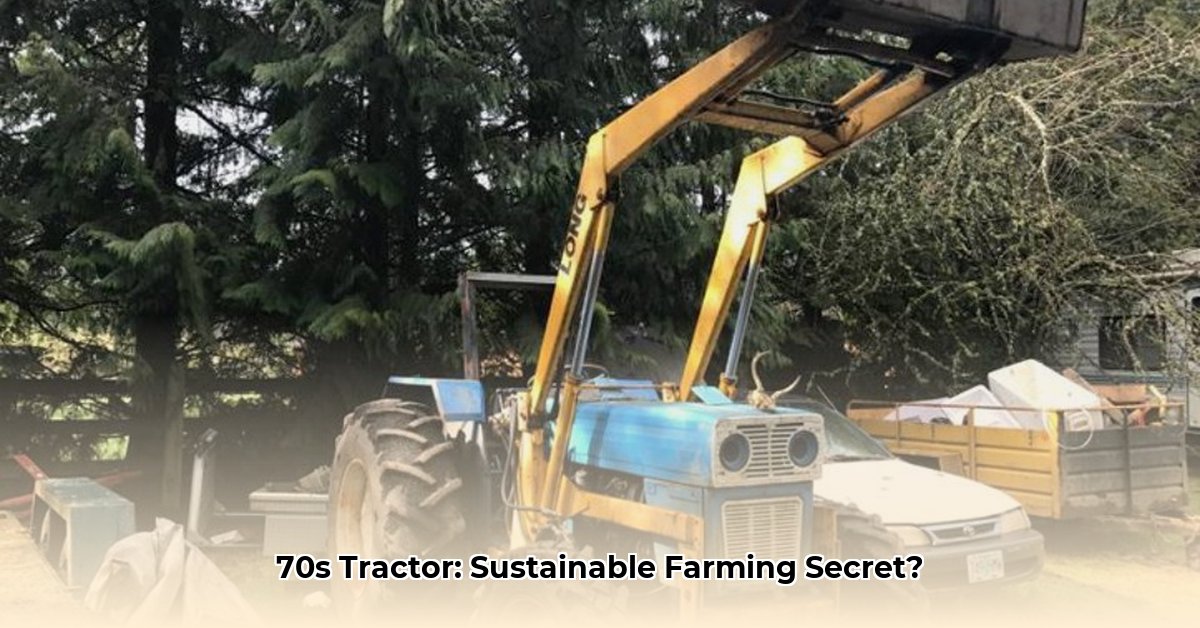
560 Long Tractor: A Romanian Workhorse of the 1970s
The Long 560 tractor, a product of Romania's 1970s, represents a fascinating case study in sustainable agricultural practices within a specific socio-economic context. Imagine a nation focused on collectivized farming, striving for modernization with limited resources and readily available technology. This tractor, with its 60 horsepower engine and a relatively modest 14.25-gallon fuel tank, wasn't designed for vast American farms. Its size was ideal for the smaller fields typical of Romanian agriculture at the time. While its power might seem modest by today's standards, its efficiency for the tasks it performed deserves a closer look. Could its simplicity and inherent efficiency have inadvertently made it an early example of sustainable agricultural machinery? For more on vintage tractors, check out this website.
Was it Truly Sustainable? Assessing the 70s Context
The Long 560's design features raise a crucial question: was it a genuinely sustainable pioneer or simply a product of its era's limitations? Its lower horsepower resulted in lower fuel consumption compared to larger Western tractors. Reduced fuel usage directly translates to a smaller carbon footprint—a significant advantage from a sustainability standpoint. But was it truly sustainable in all aspects? This is more complex to answer. Data on its long-term durability and repair frequency is scarce, hindering a comprehensive environmental impact assessment. While the lower fuel consumption is a positive, the lack of readily available maintenance records necessitates further investigation. "Assessing the long-term environmental impact necessitates comprehensive records on repair frequency and parts availability," states Dr. Elena Popescu, Agricultural Historian at the Romanian Academy of Sciences.
Simple Design: An Unexpected Sustainability Feature?
The tractor's uncomplicated design might be another, often overlooked, sustainability feature. A less complex machine typically means fewer parts that can potentially fail. Simpler repairs translate to less downtime and, potentially, reduced part replacements. Did this contribute to a longer operational lifespan? Again, detailed historical data remains elusive. However, a robust, easy-to-repair design inherently contributes to sustainability by minimizing resource consumption and waste.
Beyond the Engine: The Broader Context of Romanian Agriculture
The Long 560's story extends beyond its engine and fuel efficiency; it reflects the agricultural policies of 1970s Romania. The socialist economic system profoundly influenced its design and production. What design compromises were made due to resource limitations? What unique challenges did its engineers face in its development? Answering these questions provides a rich understanding of the tractor's role in Romanian agricultural history, going beyond simply focusing on fuel efficiency.
Comparing the Long 560 to its Contemporaries
Judging the Long 560 solely by today's standards is inherently unfair. To accurately assess its significance, it’s vital to compare it to its Romanian contemporaries. What alternative tractors were available? How did its fuel economy and power compare to the competition? Such a comparison would illuminate its contribution to sustainable agricultural practices during the 1970s and its lasting influence.
The Long 560's Enduring Legacy: An Ongoing Investigation
The complete story of the Long 560 remains unwritten. Further research is still needed to fully understand its long-term impact. Its history offers a valuable lesson on the challenges of applying modern sustainability concepts to historical technology. There's much we can learn from investigating this often overlooked machine. "The Long 560 highlights the interconnectedness of technological innovation, economic realities, and environmental consequences in agricultural development," adds Professor Ionel Vasilescu, Agricultural Engineer, University of Bucharest.
Key Takeaways: Simplicity, Context, and the Continuing Search for Sustainable Solutions
The Long 560 may not be technologically advanced by modern standards, but its story emphasizes that sustainability isn't solely about cutting-edge technology. Resourcefulness, adaptation, and an understanding of the historical and economic context play crucial roles in shaping sustainable farming practices. Its legacy serves as a testament to the enduring need for resourcefulness and the importance of understanding the larger context shaping agriculture.
Three Pivotal Points:
- The Long 560's relatively low fuel consumption made it an early example of efficiency in the sector.
- Its simple design likely contributed to its durability and reduced repair needs over its lifespan.
- Understanding the broader socio-economic context of its development is crucial for a complete assessment of its sustainability.
(Note: Technical specifications are still under research and unavailable at this time.)